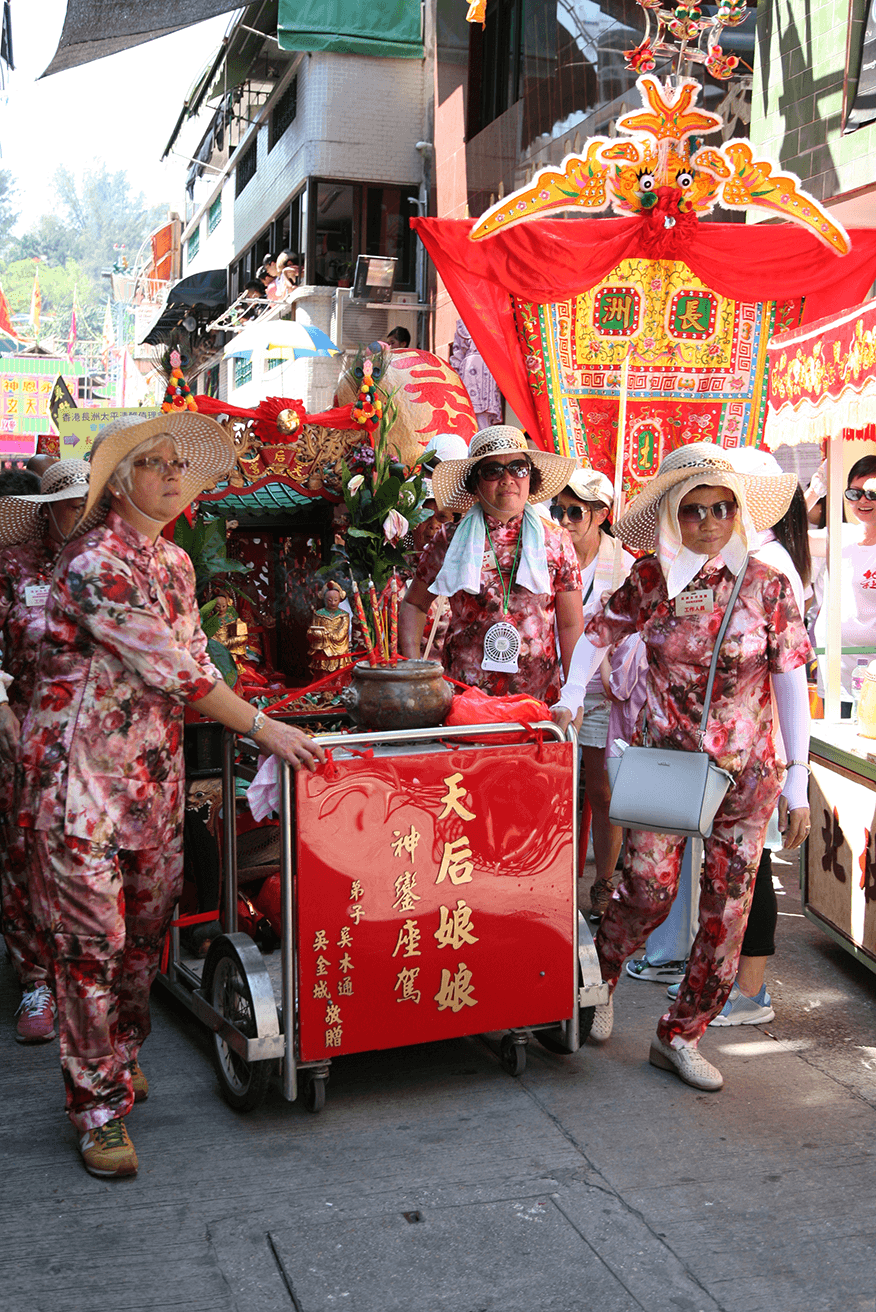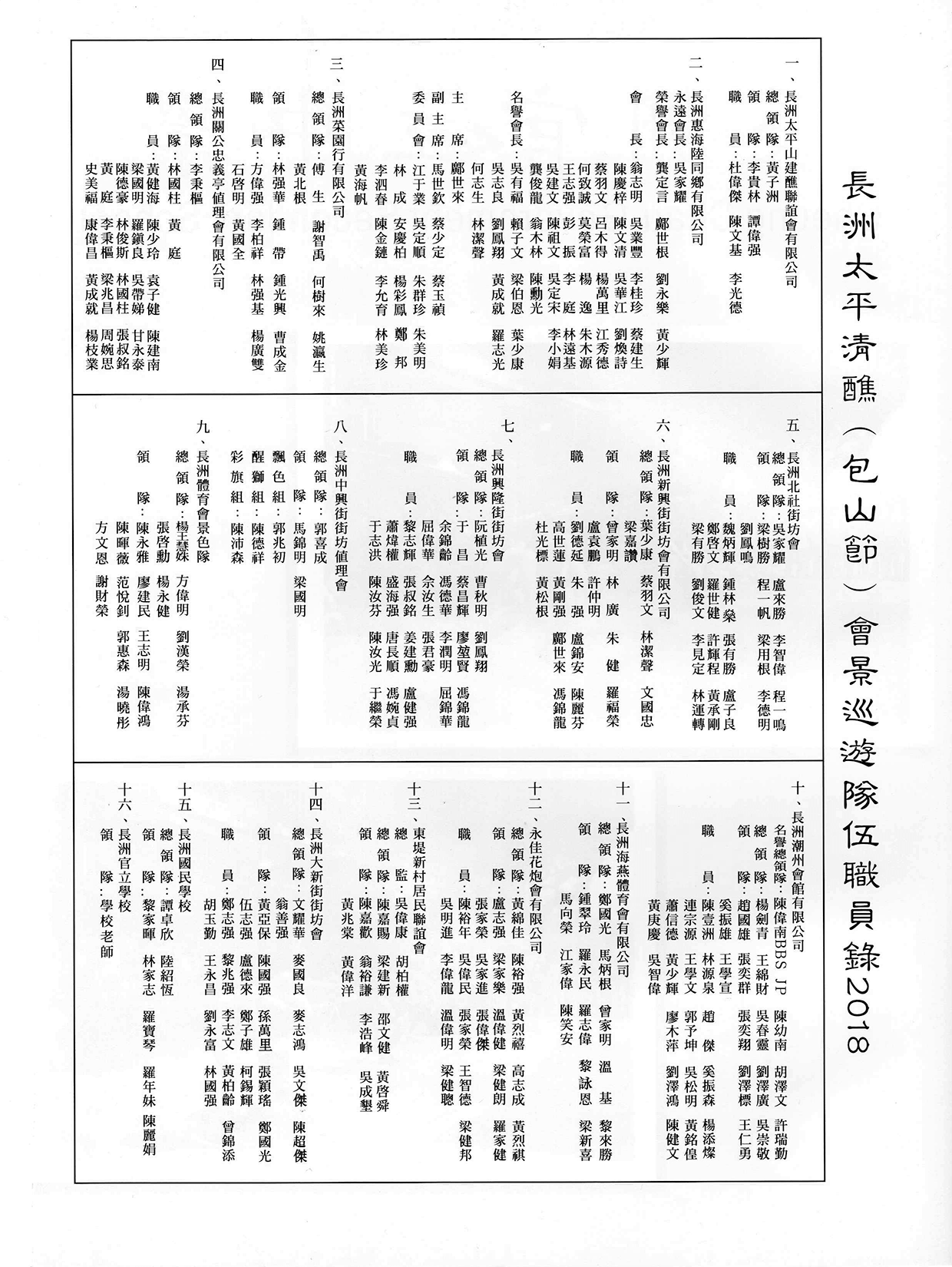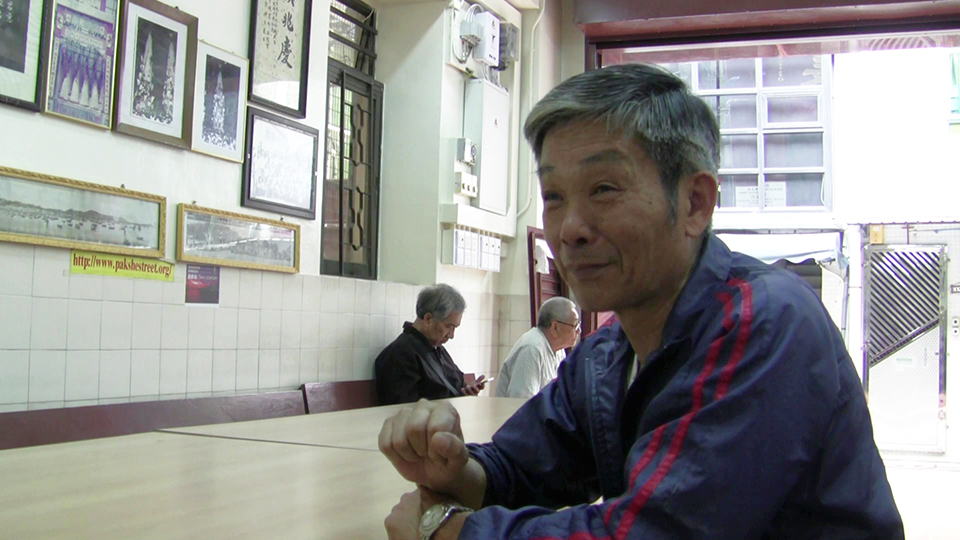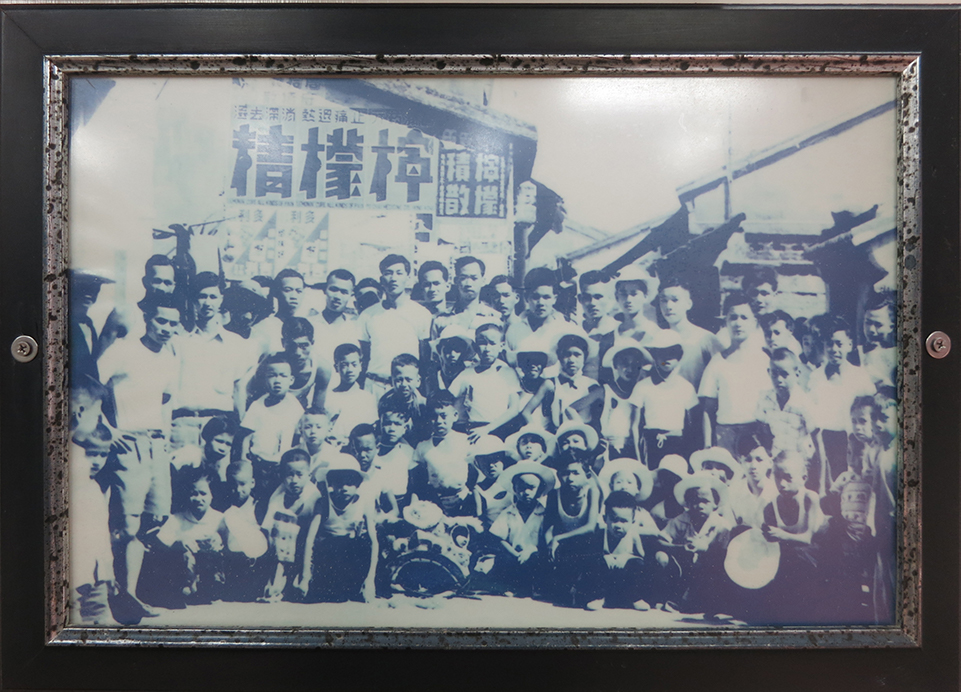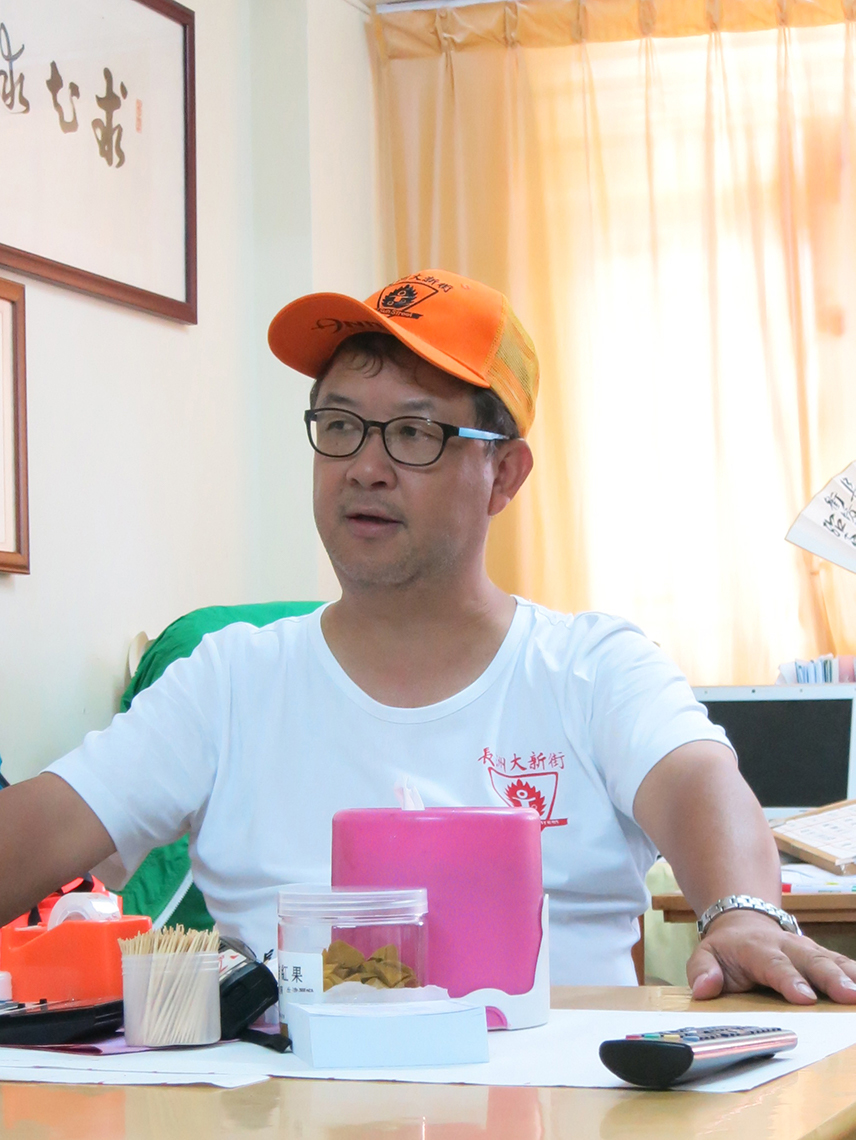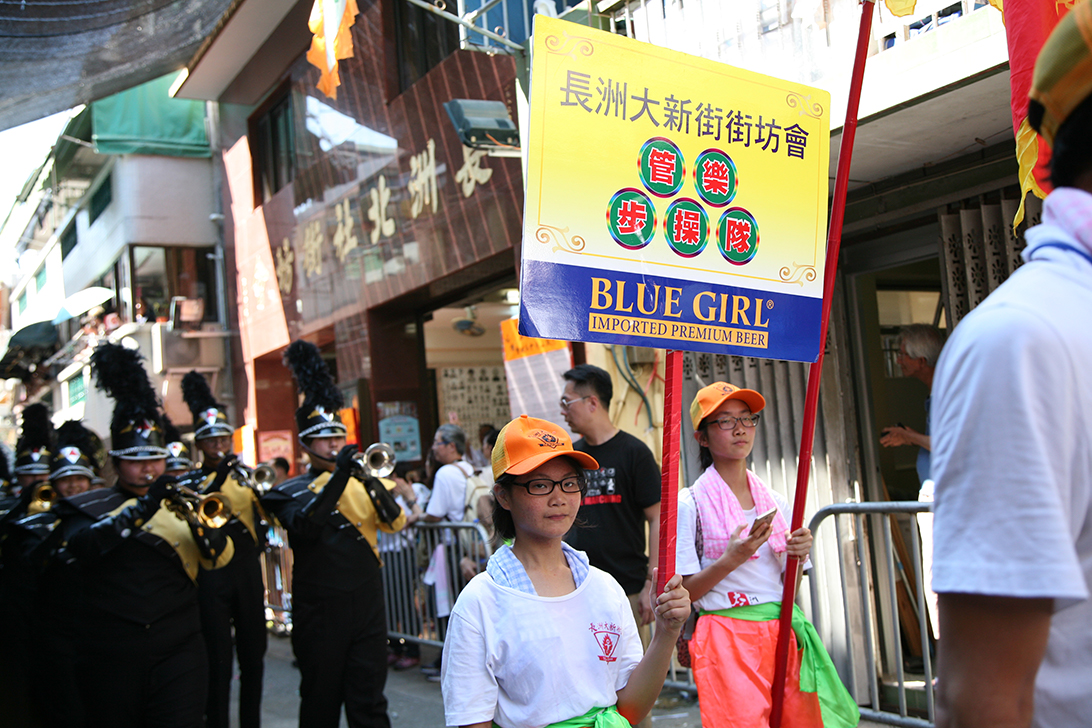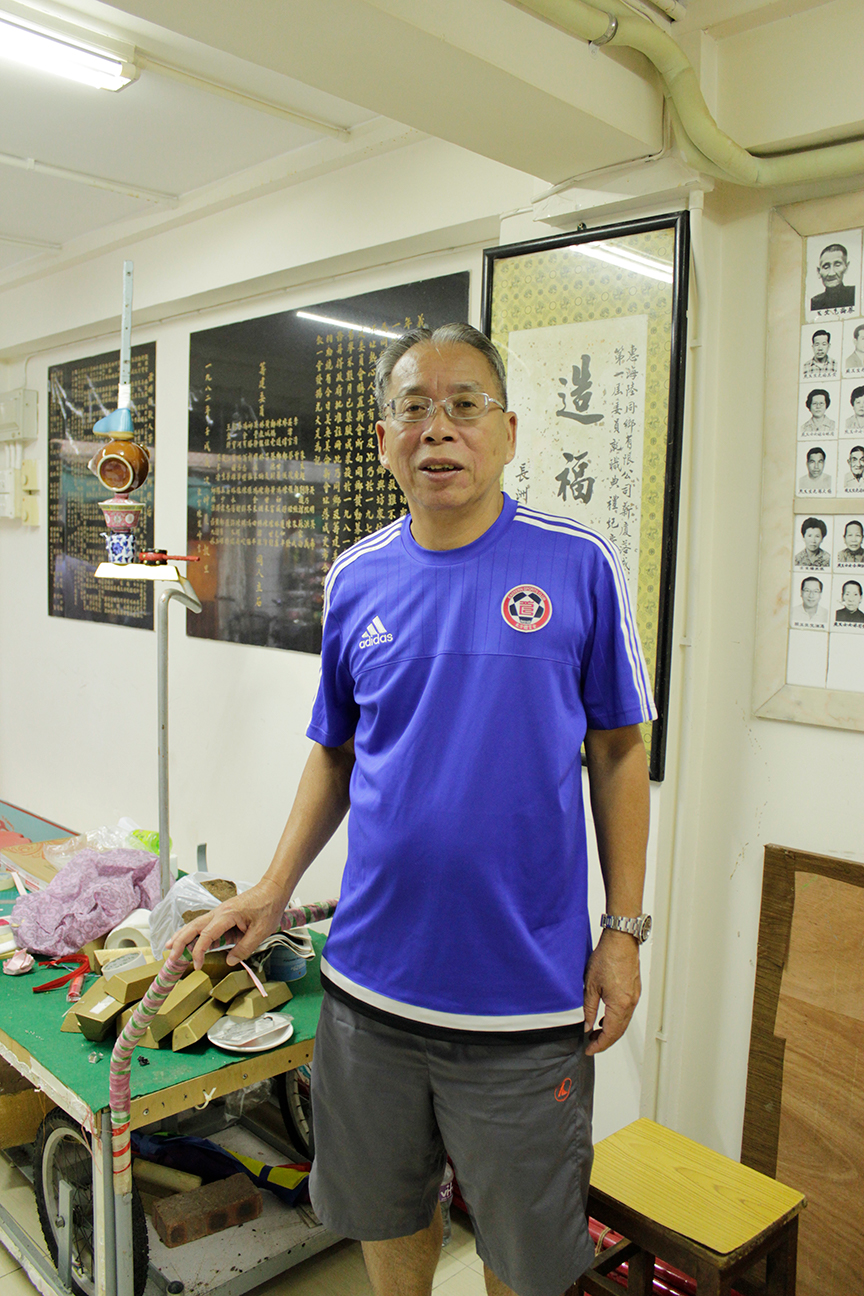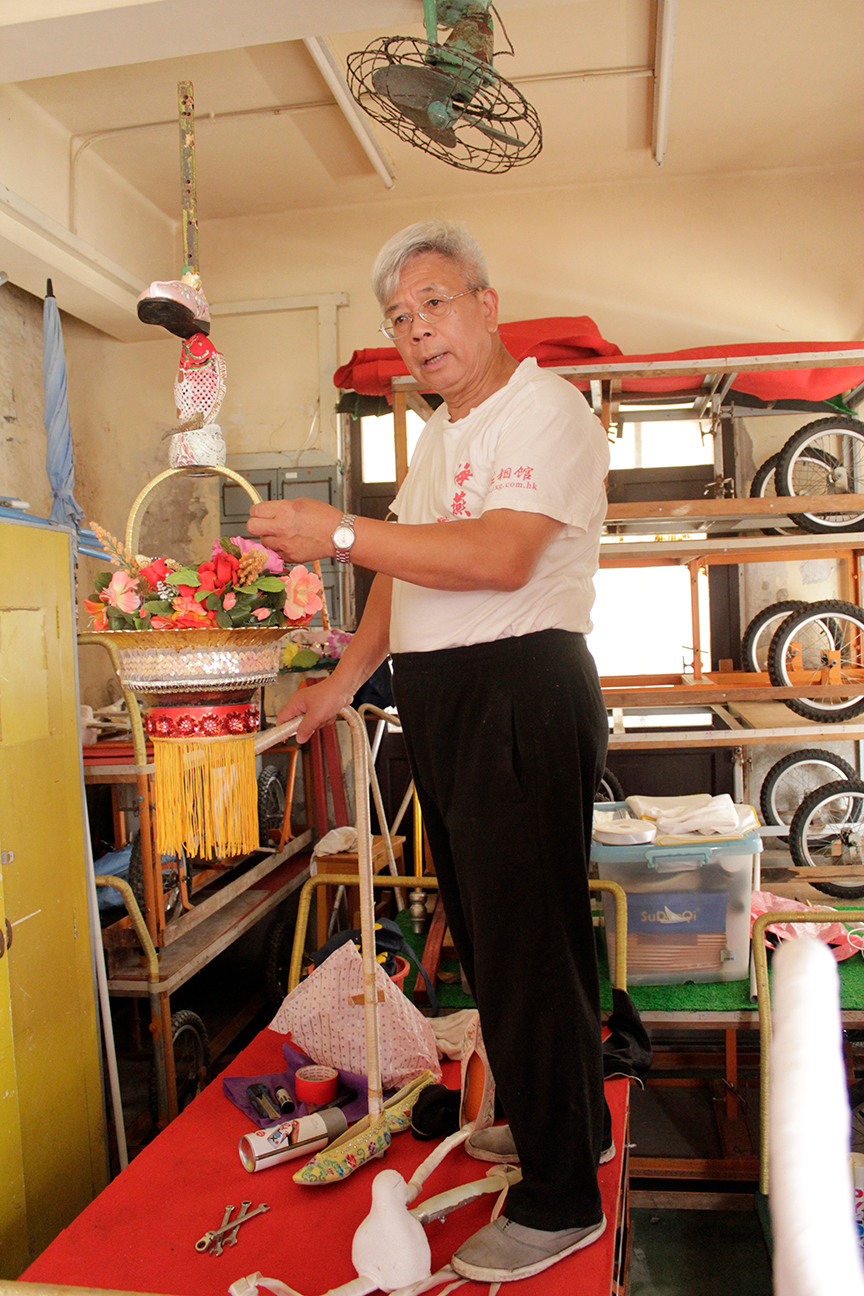Piu Sik ParadeRouteBun Festival (also known as Cheung Chau Da Jiu Festival) is a very authentic community religious activity. The recurrence of Bun Festival differs among regions, and the interval ranges from three years, five years, ten years and up to sixty years. Despite the Cheung Chau Bun Festival is an annual event, the islanders never get tired of it. Instead, they are devoted to the festival as it is the yearly highlight of the island. Because of the prevalence of the ceremony and the islanders' dedication, most traditional rituals and features are preserved. In addition, with the various groups’ courage to innovate and the promotional support by the government, the festival has become an event that attracts international attention. Dr. MA Muk-chi believes that the current parade route of the festival is the result of the island's political and environmental changes. “On the surface, the parade is a community religious activity, but it is a God Pageant ceremony in essence. The intrinsic nature of the God Pageant ceremony is to purify the streets and environs. Hence, Cheung Chau residents had to plan a route within their streets and environs and would not exceed that delimitation. The growth in scale of the parade over years of development is mainly a result of the political and environmental changes on the island. For example, because the former Governor attended to officiate the parade in the 1960s, the Piu Sik Parade route and the participating groups were regulated for the sake of security and event management. As a result, all the parade teams could perform in an orderly manner in front of the former Governor. Besides, the God Pageant ceremony has a second implication. Once the banners are hoisted and the worship ritual is complete, the area where the deities are carried to is protected. Since every parade team belongs to a different area, each of them will race against others in bringing the deity back to the temple upon the completion of the rituals. Apart from proving the competency between the teams, the islanders also believe that the quickest team will receive the highest level of spiritual protection from the deity.”1 Headed by the Hong Kong Cheung Chau Bun Festival Committee, the Cheung Chau Wai Chiu County Association and the Chief of the Bud Committee are responsible for the preparation, management and execution of the festival. Similarly, dedicated personnel are responsible for the on-site supervision and arrangement of the Piu Sik Parade. Several deities in palanquins take the lead of the parade.2 (Figure 1) However, instead of leading by a deity of Cheung Chau, the deity of Hong Kong Victoria Peak, Tai Ping Sha Pak Tai, takes the leading position. Mr. YUNG Chi-ming, the Chairman of Cheung Chau Bun Festival Committee, explained, “The Bud Festival initially took place in Tai Ping Shan Street in Sheung Wan. But due to safety concerns, the festival was later moved to Cheung Chau. As a token of respect for the incoming guests from Hong Kong Island, the leading position of the parade is reserved for Tai Ping Sha Pak Tai, followed by monoeros dances and Cheung Chau residents. Everyone has followed this tradition and this has never changed from the very beginning. Besides, the festival organisers and the islanders also approved the order of the current parade teams which comprises five Cheung Chau street associations and other groups. So, if new groups are joining the parade, they can only join at the back of the parade team.”3 With years of experience and the police's crowd management arrangement, the current parade route is presumably the most ideal. It not only keeps the audiences and the parade teams moving in separate areas but also makes the best use of the narrow streets in Cheung Chau. The close range generates consonance and interaction between the audience and the parade teams. Some higher positions on the island provide even better viewing angle and spectacular photography perspective. These locations include the convoluted staircases in Cheung Chau Sports Centre and the terraces of residential buildings. (Figure 2) According to the rundown of the Piu Sik Parade 2018, (Figure 3) all participating parade teams have to march from its home location and gather at Pak Tai Temple Playground by 1:30 pm. The parade is set to begin from Pak She Street at around 1:40 pm and move along San Hing Street, Praya Street, Tai Hing Tai Road, Chung Hok Road (Guest Stage), Chung Hing Street, Tai Choi Yuen Road, Tai San Back Street, Hing Lung Main Street and Sun Hing Back Street in succession.4 (Figure 4) The parade then returns to the endpoint between San Hing Street and Pak She Street. The whole procession lasts for three hours and is expected to end at around 5 pm. A Guest Stage is set at the southern point of the route for tourists and officiating guests to watch the parade. Parade teams will perform short performances and receive pennants at this location. The parade is led by the palanquin of Tai Ping Sha Pak Tai and followed by the eight deities enshrined in different temples in Cheung Chau (Figure 5) with Cheung Chau Pak Tai bringing up the rear. Numerous groups also perform a variety of performances during the parade, including lion dances, monoeros dances, Chinese banner and Kwan Tai banner parade, marching with the Sword of Pak Tai, and wind bands performances. (Figure 6) Among these groups and performances, the fifteen or sixteen sets of eye-catching Piu Sik are the most relished feature of the parade. The Piu Sik Parade, which features subject matters ranging from ancient stories to current affairs from local or abroad, often amaze the audience and become the focus of the media. 1 Dr. MA Muk-chi (personal communication, Mar 1, 2019) 2 CHOW, Shu Kai (2016) The Publication Project of Temples on Cheung Chau Island. Hong Kong: Cheung Chau Rural Committee. 3 Mr. YUNG Chi-ming (personal communication, April 20, 2018) 4 Hong Kong Tourism Board (May 12, 2019). The Route of the Piu Sik Parade. Retrieved from http://www.discoverhongkong.com/tc/see-do/events-festivals/chinese-festivals/cheung-chau-bun-festival.jsp CrewThere are five main streets in Cheung Chau, namely Pak She Street, Sun Hing Street, Hing Lun Street, Tai San Street and Chung Hing Street from north to south. These streets are also the main route of the Cheung Bun Festival Carnival Parade. Despite various time-honoured street associations were established in each of these streets in different period, all of which share the same missions in strengthening the bonding and mutual respect within the community and advocating the spirit of helping each other. Each of these associations regularly organises Spring Festival Celebration, senior gatherings, group tours and gives out scholarship as the means to achieve its missions. During these community activities, these associations will also recruit people with expertise, talents, and volunteers and expand social connections for the annual Piu Sik Parade. The preparation for the parade is complex and tedious, on top of the Piu Sik production; these associations are also responsible for the actual arrangement works for the lion dances and flags parade. Besides, being the yearly highlight of the island, the preparation and execution of the parade costs a fortune. Nonetheless, the operating mode of these street associations evinces the spatial structure of the community in Cheung Chau. It is also an embodiment of a unique collaborative culture that is hardly found elsewhere in Hong Kong. The kai-fong (neighbourhood) associations of Cheung Chau’s five main streets introduced Piu Sik to the early Bun Festival Carnival Parade. Several groups joined the line of Piu Sik production later. These groups include Choi Yuen Hong (discontinued many years ago), Cheung Chau Sports Association, Petrel Athletic Association and Wei Hoi Luk Clansmen Association. (Figure 1) The Piu Sik production preparation usually begins after Lunar New Year. It involves conceiving the content, recruiting hovering kids, crafting costumes, and modifying the steel frame in the Piu Sik. Piu Sik artisans are mostly male while female islanders are responsible for the meticulous works such as sewing, dressing and makeup. Sometimes, good friends from outside these main streets will also show up to lend a helping hand. Everyone exerts their talents to make the parade great. This collective and harmonious coherence explained how the Cheung Chau Bun Festival has stood the test of time. And the prevalence of the festival also implicated how has the intangible cultural heritage been passed on. Hong Kong Cheung Chau Bun Festival CommitteeNo. 2 Church Road, Cheung Chau The Chairman of the Cheung Chau Rural Committee, Mr. YUNG Chi-ming, is currently over seventy years old. He has been involved in Cheung Chau Bun Festival since his twenties. As he had assisted in the work of the then “Bud Organizing Committee”, Mr. Yung gained a thorough knowledge of the background, development and changes of the Bun Festival. To better preserve and promote the Bun Festival, Mr. Yung and a group of experts in Cheung Chau reformed and established the “Hong Kong Cheung Chau Bun Festival Committee” in 2004. Mr. Yung has been the primary person administering the Cheung Chau Bun Festival and he has continued to be nominated and appointed as the chairman of the committee. “There are five main streets in Cheung Chau, and these five streets have the tightest bonding among the whole island. In fact, there are more than a hundred community organisations in Cheung Chau. Although only thirteen of them are taking part in the parade, the eight deities in palanquins and other performance groups extend the parade to twenty four or twenty five teams. The duration of the parade is already too long. Considering the burden of the hovering kids, we are not going to approve new groups to join the parade unless there is an exceptional reason. In addition to the groups heavily involved in the parade, a few groups including the Kwan Kung Pavilion Committee, Chiu Chow Association, and Cheung Chau Tung Tai Sun Chuen Resident Association joined at a later stage. Also, there are a few student groups and teams performing in front of the guest stage. Every year, the committee produces a catalogue (Figure 2) featuring the history and origin of the Bun Festival1 , the organisation of the parade2 , (Figure 3)and the schedule of the performances. The booklet also lists out the structure of the parade teams as well as the name of the general leaders, team leaders and other staff of each parade team. Thanks to its resourceful content, the catalogue is fairly well-received by the parade-goers.” 3(Figure 4) 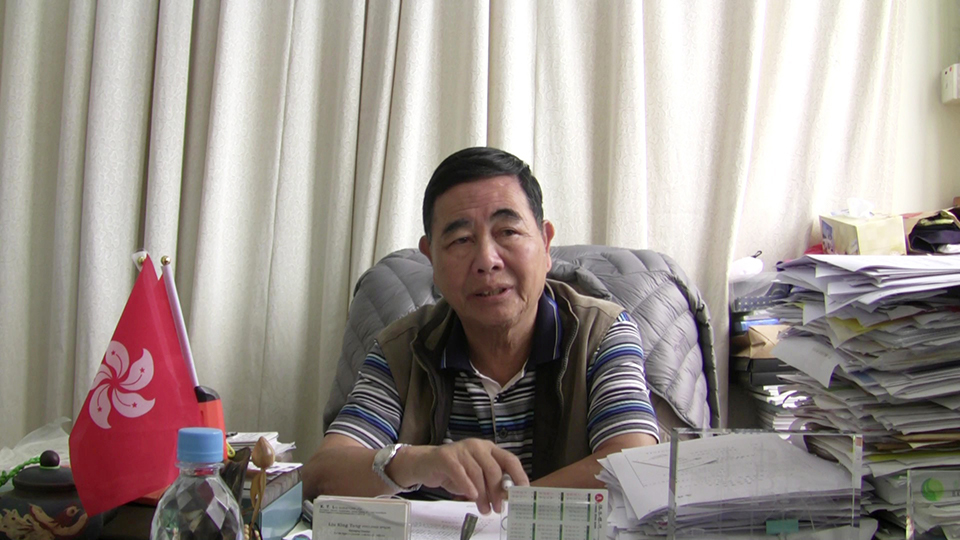
(Figure 4) Hong Kong Cheung Chau Bun Festival Committee, Chairman YUNG Chi-ming. Photo by Cissy Chan (2018) Pak She Street Kai Fong AssociationNo. 22-24, Pak She Street, Cheung Chau Before the Second World War, there was “Nam She” (Southern Society) in the south of the current Sun Hing Street and “Pak She” (Northern Society) in Pak She Street. The two societies were not only the gathering places for the islanders but also the community security and mutual help groups. Martial art master CHAN Kwai-chai came to teach the islanders Kung Fu in views of the high crime rate in Cheung Chau in those days. Besides, Master Chan also taught lion dances and led the formation of a Youth League. The Youth League subsequently found the “Pak She Village Office” which was eventually registered and renamed as Pak She Street Association in 1985. At the same year, Mr. LUO Yong-tai, the chairman of the association, raised funds from a group of social elites and the community members and purchased the current premises.4 Speaking of the history of Cheung Chau Piu Sik Parade, Mr. CHING Yat-ming, Vice Chairman of Pak She Street Association, said, “In the 1920s, a gentleman named Mr. Fung witnessed a parade in Shawan in Panyu. Instead of Piu Sik, the parade was called “ZouGu Shi” (which means the narration of ancient stories). Mr. Fung then introduced the parade to Cheung Chau Bun Festival. Rumours have it that the Cheung Chau Piu Sik was originated by our association, and all the early Piu Sik artisans were members of our association. Today, youngsters, adults, and seniors in our association are involving in Piu Sik production as they believe that it is the association’s responsibility to produce Piu Sik. As each set of Piu Sik has to be thoughtfully and meticulously crafted, the preparation work must begin as early as the first month of a year. " 5 (Figure 5) Traditionally, Pak She Street Association sends more Piu Sik to the parade than other participating groups; it sends three sets of Piu Sik to the parade every year. Although the association features both ancient stories and current affairs in its Piu Sik set, it insists on sending at least one set in ancient costumes. The reason for this is that the association has custom-made many ancient costumes over the years, and sending at least one set in ancient costumes can ensure the best use of these precious outfits. Mr. Cheung added, “Every participating group will rack their brains for the parade. By contrast, the performances of our group tend to be more traditional. It must comprise lion dances, Piu Sik sets and colourful flags. As for the groups which do not include Piu Sik sets or lion dances, they will incorporate other performances or elements. There was once a group performing Samba dance. But as some islanders thought that the Bun Festival was ultimately a religious activity, the performance in the parade had to be respectful to the ritual. Hence, the Samba performance was called off halfway."6 Among the countless volunteers in Pak She Street Association, many are former Cheung Chau residents. Their keenness to return and contribute to the festival is ascribed to their bonding and sense of belonging to the community. “My brothers and I spent our childhood here. All of us are candid. When I looked at the old photos, I saw myself participating in the parade as 4-year-old kid. I am over 60 now, and I still love this association and Cheung Chau the same way I did as a kid. Our mindset is as simple as that.” 7 (Figure 6) San Hing Street Kai-Fong AssociationG/F, No. 8 Sun Hing Street, Cheung Chau The Piu Sik team of San Hing Street Kai-Fong Association comprises Master WONG Ping-kwong, Master CHEUNG Chik-fan and four to five retired neighbours. Master Cheung, who is currently over ninety years old, is the eldest member of the team. It is said that the Piu Sik carts, steel frames and costumes of the group are all crafted by Master Cheung alone. The Piu Sik style of the association is rather traditional which features only ancient costumes. Moreover, some props such as the abacus are even handmade. Due to the height limitation of the association’s premises, the Piu Sik of the association contains more joints than ordinary ones. The meticulous craft in concealing the joints distinguishes Cheung Chau Piu Sik from its Shawan variant. The frame joints of Cheung Chau Piu Sik are often found under different mechanisms. And the innovative use of this mechanism seven allows some parts on the Piu Sik to rotate back and forth, making actions like pouring tea possible. This unique feature was invented by San Hing Street Kai-Fong Association. “I was born in Singapore. I moved to Cheung Chau when I was around one year old, so I have lived here for almost seventy years. I started to learn the craft of Piu Sik after the Japanese occupation of Hong Kong. The former master in charge here was Mr Fung. At that time, Mr Fung was not long for this world, so he taught another apprentice and me all his skills. That was how I began crafting Piu Sik. Later on, as more Piu Sik artisans emerged, everyone had to be more innovative. But in the early days, only a few groups were participating in the parade. Pak She Street association and our association were the initial Piu Sik teams.” Said Master Cheung.8 (Figure 7) “In fact, we would sit together and talk about how to make the Piu Sik whenever we were free. We didn’t think of accomplishing any goal. Instead, we were only trying to come up with themes and ideas through our conversations. Sourcing materials was the crucial step for Piu Sik crafting. Take that antique as an example, we travelled all the way to Lascar Row to get hold of it. Apart from that, we also have a half-a-century old wine jug, which we modified ourselves for a Piu Sik set. In the past, the wine jug was made of lead. Unlike today where everything is processed with machines, there wasn’t any mechanical equipment in the past. We had to craft it with hand tools. To be frank, all the steel frames we had were second or third-hand items. We basically kept any frame that is intact so that we could have a brief idea on how to build one. In the past, we had to carry the frame to the blacksmith if it had any issue. But now we can adjust the frame ourselves with all the electric tools, so we can make bolder attempts with the frame.9 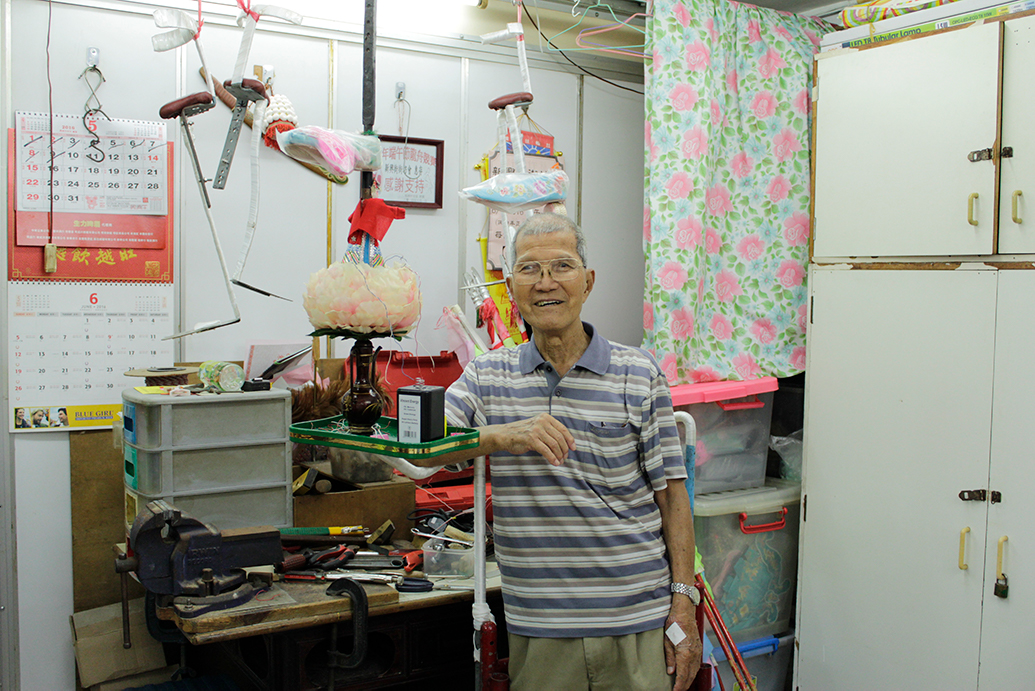
(Figure 7) San Hing Street Kai-Fong Association, Master CHEUNG Chik-fan. Photo by Cissy Chan (2018) Hing Lung Street Kai-Fong AssociationNo. 57A, Hing Lung Back Street, Cheung Chau The current site of Hing Lung Street Kai-Fong Association was allocated by the government, and the current premises were built in the 1950s. Although the association was only registered after the premises were built, it had been producing Piu Sik before that. Before the current premises were built, the association had to rent spaces from the shops in the neighbourhood for the Piu Sik Parade preparation. Eventually, the Cheung Chau Rural Committee applied to the District Office on behalf of the association for the current site. The Rural Committee then raised funds through from the association to build the premises. The association’s Chairman Mr. YUE Cheong and Vice-Chairmen Mr. CHO Chau-ming and Mr. LIU Kwan-yin are retirees who grew up in Hing Lung Street. Although they have already moved away from the street, they still come back regularly to assist in the development of the association and the production of Piu Sik. Currently, there are two Piu Sik artisans in the association, namely Master CHAN Yue-kwong and Master YUEN Jik-kwong. Among the two, Master Chan has been building the steel frame in Piu Sik since six or seven years old. The association is best known for its hand-lifted Piu Sik set is the only team in the parade that still maintains this traditional form of Piu Sik. The hand-lifted Piu Sik set takes four adults to carry, and an extra four persons to balance on the side. Thus, it requires at least eight people to attend to one set of Piu Sik. Although it costs much more man-power to manage, the hand-lifted Piu Sik conveys a more authentic illusion of floating and is favoured by the audience. The consensus of the members of the association is that they will continue the tradition of hand-lifted Piu Sik unless they can no longer recruit people to lift the set. Hing Lun Street is the shortest street among the five main streets in Cheung Chau. There are only a handful of shops and tenants in this street. As a result, the association has a hard time in the fund-raising campaign for the festival in compare to other kai-fong associations and needs to put in double the effort. Fortunately, the diligent work of the association has gained the community’s recognition and, better still, people from nearby neighbourhoods are also offering supports and this helped the association to attain financial balance. Mr. Chao commented, “The annual Cheung Chau Bun Festival is a driving force to the island’s economy. It also helps to strengthen the bonding, mutual assistance and collaboration of the community. Every neighbourhood works together to make this event a great success every year. This cohesiveness is the most precious outcome of the festival. Imagine if the festival were to suspend for a year due to whatever reason, I reckon all Cheung Chau people would feel at a loss that whole year. Everyone islander will talk about the parade over the half-year span between the preparation and the actual parade. It is impossible to find such degree of attention to a single event elsewhere in Hong Kong.”10(Figure 8) 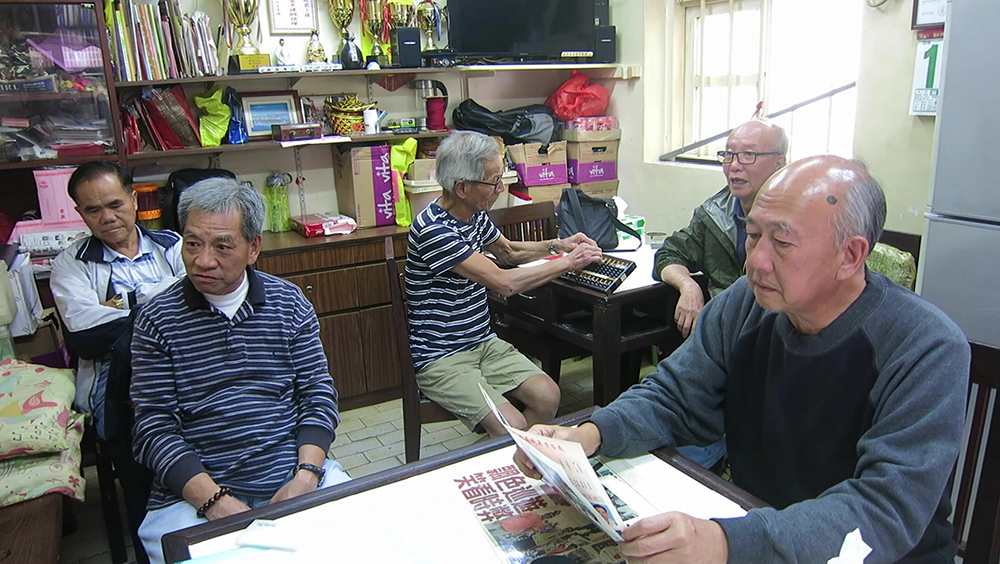
(Figure 8) Hing Lung Street Kai-Fong Association, Mr. CHO Chau-ming. Photo by Cissy Chan (2018) Tai San Street Kai Fong Association3/F, No. 40 Tai San Back Street, Cheung Chau Tai San Street is the longest and most prosperous street in Cheung Chau. It comprises the most shops on the island and is the commercial, cultural and banking centre of the island. Tai San Street Kai Fong Association began producing Piu Sik in the 50s/60s or even as early as the late 1940s. However, the production discontinued for more than thirty years since the 1970s due to the lack of successors in the association. In 2007, a group of enthusiastic kai-fongs in Tai San Street decided to restructure the association after numerous discussions. They even hired manpower to expand the association and re-enter the Piu Sik Parade in the Cheung Chau Bun Festival. The association’s parade team, hence, is relatively new to the festival. In the first few years, this inexperienced parade team had to depend on the equipment and the masters from other groups to complete the Piu Sik set. The Association has been crafting its Piu Sik set solely for four years now, but they still tirelessly learn from other masters when they encounter technical difficulties. The association’s chairman Mr. Hung Hin-lai remarked, “If you are willing to ask, someone will immediately answer any of your questions. This is the advantage of living in Cheung Chau. Among the five to six projects we engage in for the annual festival, the Piu Sik production is the crucial project. We usually appoint a master to direct the Piu Sik production and lead the parade. But we will also assign a few freshmen to join the team and learn the skills. If someone is interested, he or she can partner with the master and take the lead in the future. (Figure 9) “The highlight of the 2018 parade is the hovering kids who dressed as the perky characters, “Arale” and “Gatchan”, in Dr. Slump. The primary reason we resumed producing Piu Sik is to draw more young people to participate in this ritual so to pass on the cherished Piu Sik crafting skill from one generation to the next. Chairman Hung believes that the local custom in Cheung Chau has fostered an excellent bonding between the islanders. Some local people may have moved away for a long time, they will still come back and support the common goal of the community. The association has once seen as much as five hundred peoples helping with the Piu Sik cart or carrying the colourful flags. The association’s parade team is headed by a gong team and followed by two banners written with “Cheung Chau Bun Festival” and “Tai Sun Street Kai Fong Association”. And at the rear-end of the parade, there is also a marching wind band playing wind instruments, pop music as well as performing various dances. Because our team withdrew from the parade previously and re-entered only eleven years ago, the group is assigned to the back end of the parade according to the organiser’s rules. And that’s why we arranged a vibrant marching wind band as the grand finale of the parade.” 11 (Figure 10) Chung Hing Street Kai Fong CommitteeNo. 1A, Chung Hing Back Street, Cheung Chau The site of Cheung Hing Street Kai Fong Committee is located in a loft. The site is closed on weekdays and one must make an appointment to visit. But on every weekend, it is packed with committee members playing mah-jong. The committee had suspended for a lengthy period as no one took over the duties after the former senior administrator passed away. At a subsequent time, the kai-fongs in the area thought that they should reorganise and advance the committee, therefore, they conducted a neighbourhood fund-raising campaign and applied to the government for land allocation. At last, they established the current compact clubhouse. The community loft not only serves as gathering space for the kai-fongs, but it also gives a boost to the sense of belonging of the people in the neighbourhood. Since Mr. LEUNG Kwok-ming has chaired the association from 1985, the Piu Sik production phrase has always been the most hectic time of the association. Every year, the association produces two sets of Piu Sik themed on current affairs or political issues and TV dramas respectively. Essentially, the most popular or most attractive character in ancient costumes in a TV drama or a movie of that year as the parade audience is always fond of characters in eye-catching ancient costumes. The theme and topic, on the other hand, is important to the representation of current affairs in order to attract audience attention. In fact, the committee has only been producing Piu Sik themed on current affairs for twenty years. In the past, when television was uncommon, they would only create Piu Sik sets in ancient costumes. The committee only recently began adopting characters from costume TV dramas in its Piu Sik sets because parade goers can grasp the character at the first glance. Chairman Leung stated, “There are indeed more and more groups choosing to appeal to the Hong Kong audience with Piu Sik themed on current affairs than ever. In the past, Piu Sik artisans were committed to crafting turning parts or spinning props as they had more time to produce the Piu Sik. By contrast, our current artisans Mr Kwok have to work in the daytime. Hence, he does not have the leisure to elaborate on the tricks on the Piu Sik. Sometimes, he even has to resolve to the simple but fine approach when the schedule is tight. The rules of thumb of a Piu Sik parade are to draw attention and evoke audience empathy, right? So, we are committed to make beautiful costumes to attract audience attention. In the past, we used to bake ginkgo nuts for the hovering kids to eat before the parade. As these kids are strained to the steel frame for up to five hours, the baked ginkgo nuts can effectively reduce their urinary urgency. However, this tradition has long gone as the floating kids just keep sweating during the parade under the much warmer climate in the current days.” 12 (Figure 11) 
(Figure 11) Chung Hing Street Kai Fong Committee, Mr. LEUNG Kwok-ming. Photo by Cissy Chan (2018) Wei Hoi Luk Clansmen AssociationG/F, 15 Sun Hing Street, Cheung Chau Wei Hoi Luk Clansmen Association was established in 1925. Its mission is to unite the Hoklo and Hoifung people in Cheung Chau. The so-called Hoklo and Hoifung people refer to the people from Haifeng and Lufeng region as well as Huidong county. Therefore, these people are also aliased as “Wei Hoi Luk”. Since the origin of Cheung Chau Bun Festival is connected with Huidong county, the monoeros dances by Wei- Hoi-Luk Clansmen Association is designated to lead the current parade. The site of the association is located on the ground floor. On both sides of its hallway hung the photos of the villages that set the site foundation. These photos alone embodied the momentous unison of the clansmen. Being the regular gathering place for the “Wei Hoi Lok” clansmen, noises of playing cards resound from the back office intermittently. Nevertheless, all sorts of gathering and entertainment are brought to a halt during the preparation for the Piu Sik Parade. Master WONG Shing-chau is not a “Wei Hoi Luk” clansman. He was born in a blacksmiths family that makes almost anything from boats, rakes, farm tools, fishermen’s tools to the iron tools used on fishing boats. Master Wong learnt forging at the age of 13. In those days, he worked alongside his father and grandfather, but now he is the only master producing the Piu Sik steel frame in Cheung Chau. The Wong’s family has been working crafting the steel frame in Piu Sik for generations. Because he is a good friend with the chairman of Wei Hoi Luk Clansmen Association, Master Wong put the Piu Sik production for the association in the first place. Nevertheless, he will still serve other associations and kai-fongs in his free time. After his retirement in 2003, Master Wong donated all his forging tools to the Hong Kong Heritage Museum for preservation and exhibition. The Conservancy Association also conducted some research about Master Wong by inviting him to demonstrate his iron forging skills and Piu Sik steel frame crafting techniques. These demonstrations were videotaped for documentation. Master Wong only began producing Piu Sik in 2005. Master Wong remarked, “I changed my profession in 1989 when I was over forty. I was fortunate that I could work as a maintenance technician in Nethersole Hospital because of my forging skill. Later, when the Eastern Hospital was built, I even got transferred to the Eastern Hospital. I just cannot stop making Piu Sik even though I have passed my prime. I am not capable of designing Piu Sik anymore, but I will assist in making bits and pieces as long as I can. My daughter is in her forties now. She had acted as a hovering kid for years in the past. I had done that too, but that was more than sixty years ago. I’m seventy three now, and there isn’t much I can do.” 13 (Figure 12) Unlike the other street associations, Wei Hoi Luk Clansmen Association is not composed of the kai-fongs living in the street. Therefore, except for the donation from some generous kai-fongs in the nearby streets, a large extent of its funding for the Cheung Chau Bun Festival comes from the sponsorship from other affiliated clansmen associations on the island and in Hong Kong and Kowloon. Wei Hoi Luk Clansmen Association sends two sets of Piu Sik to the parade every year. A few hundred of its clansmen will come to the island on that day to partake in the Piu Sik Parade, parade dances, or monoeros dances. Besides, affiliates from other regions will also come to help with the Piu Sik carts and maintain order. Petrel Athletic AssociationG/F, No. 88 Sun Hing Back Street, Cheung Chau The founder of Petrel Athletic Association, Master TSANG Ka-ming, moved to Cheung Chau in 1974 and has lived there for over forty years now. Master Tsang practised martial art when he was a teenager, and by the chance of fate, he came up with the idea to establish his own clan on the island to pass on his skills. Eventually, he found the “Petrel Athletic Association”, teaching both martial arts and lion dances. Since 1982, the association has been sending lion dance teams to celebrate the Pak Tai Festival. At its peak, the association would send up to three lion dance teams a day.14 “We didn’t produce Piu Sik in the early days. It was a coincidence that triggered us to learn the craft of Piu Sik. In those days, there was a high threshold to this craft as one simply could not acquire the foundational knowledge. Nevertheless, an incident made us realise we should also produce Piu Sik. It all began with the consistent invitations we were receiving from different organisations that asked us to send our Piu Sik to participate in their activities. As we didn’t have the resources to build one, we would forward the invitations to other organisations that owned a Piu Sik. However, our eagerness in crafting Piu Sik was growing gradually. Besides, we recognised that teaching Kung Fu and lion dances could only earn us much pennies. So, we had the thought that 'we would also do Piu Sik' so that we could gain some money to cover our expenses of our sporting activities. Because our association was not composed of kai-fongs, the initial Piu Sik production cost was set off by other income. Said Master Tsang. Cheung Chau Sports AssociationNo. 147, Tai Choi Yuen Road, Cheung Chau Cheung Chau Sports Association was found as a non-profit organisation in 1968. Master KWOK Wai-sum recalled, “In the early days, we would organise basketball competitions, table tennis competitions and football competitions. Our chairman was the principal of a primary school as well as the Piu Sik artisan of another association. At some point, we became interested in Piu Sik and began producing. Most members in our association used to be classmates, and some of us even join the Boy Scouts together. Our Piu Sik team was established in 1972, and we have participated in every Cheung Chau Bun Festival Parade since then. The team comprises more than 20 people who take care of both the design and production of the Piu Sik. Our association usually sends about one hundred fifty people to participate in the annual parade. Apart from the Piu Sik Parade in Cheung Chau, our team has also been invited to participate in numerous parades and exhibitions held by groups and regional organisations. (Figure 14) We are accustomed to work collectively, and some of our members even specialise in particular skills. For example, Mr. Liu is good at mechanics and metalwork. I received training in graphic design and photography and used to teach in the Film Academy of Hong Kong Baptist University. As a few of us have already retired, we can spend more time producing Piu Sik. Also, we often invite our friends, young people, boys and girls to help. At the beginning of every production preparation, the Piu Sik team and the costume team will discuss and decide the theme together. They will then follow up their responsible part autonomously. Because the mission of Cheung Chau Sports Association is to promote sports, political satires are absent in their Piu Sik. By contrast, joyful colours and sports-related theme dominate their set. “Due to the economic issues and the fact that modern people have less leisure time, the sets in Cheung Chau Piu Sik Parade are becoming more and more minimalistic. Unlike other organisations and street associations that receive donations, we have to finance the Piu Sik production with our hard-earned money. Excluding our efforts and time cost, the annual production cost could already reach dozens of thousands. In spite of that, our Piu Sik is the tallest among all parade teams. It is generally two feet higher than the average ones. We build such a lofty Piu Sik because we think that it embodies a stronger sense of floating, and hence is much more eye-catching. Besides, we will install as many horizontal extensions as possible on the Piu Sik. These structures fly in and out, with strong linear dimensions, infusing dynamics to the set.16 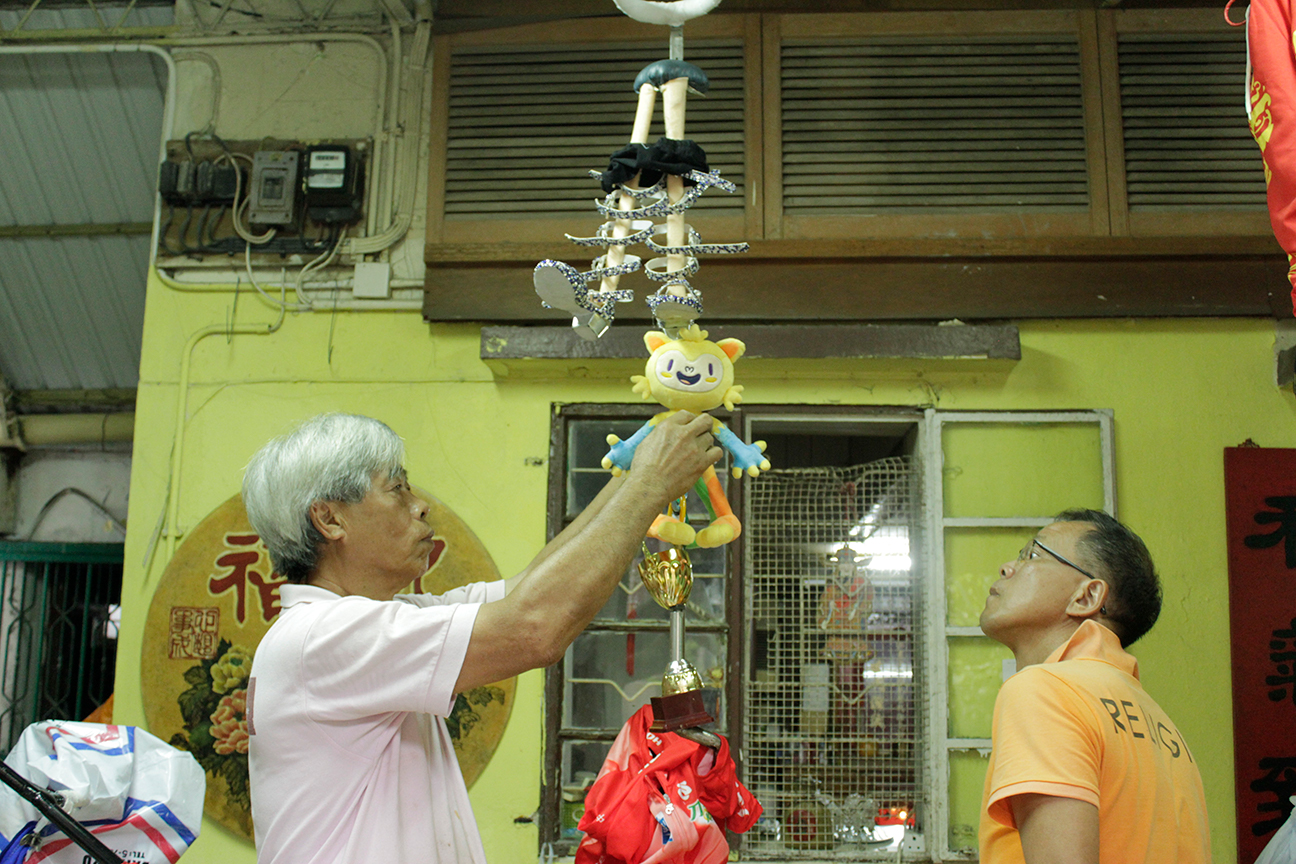
(Figure 14) On the left, Master LIU Tak-man. On the right, Master TSE Choi-wing. Photo by Cissy Chan (2016) 1 Hong Kong Cheung Chau Bun Festival Committee (Ed) (1981).Cheung Chau Bun Festival Carnival Parade Catalogue. 2 Ibid. 3 Chairman YUNG Chi-ming (personal communication, April 20, 2018) 4 Pak She Street Association (April 18, 2018). Retrieved from https://sites.google.com/site/pakshekfa/ 5 Vice Chairman CHING Yat-ming ( personal communication, April 18, 2018) 6 Ibid 7 Ibid 8 Master CHEUNG Chik-fan, (personal communication, May 12, 2016) 9 Master WONG Shing-chau and Master CHEUNG Chik-fan (personal communication, May 12, 2016) 10 Mr. Cho Chau-ming (personal communication, April 18, 2018) 11 Chairman HUNG Hin-lai (personal communication, May 21, 2018) 12 Mr. LEUNG Kwok-ming (personal communication, April 18, 2018) 13 Master WONG Shing-chau (personal communication, April 18, 2018) 14 Petrel Athletic Association (Mar 13, 2018). Retrieved from http://www.ctc.org.hk/gb/history_page01-3.asp 15 Master TSANG Ka-ming (personal communication, May 12, 2016) 16 Master KWOK Wai-sum (personal communication, May 12, 2018) |






